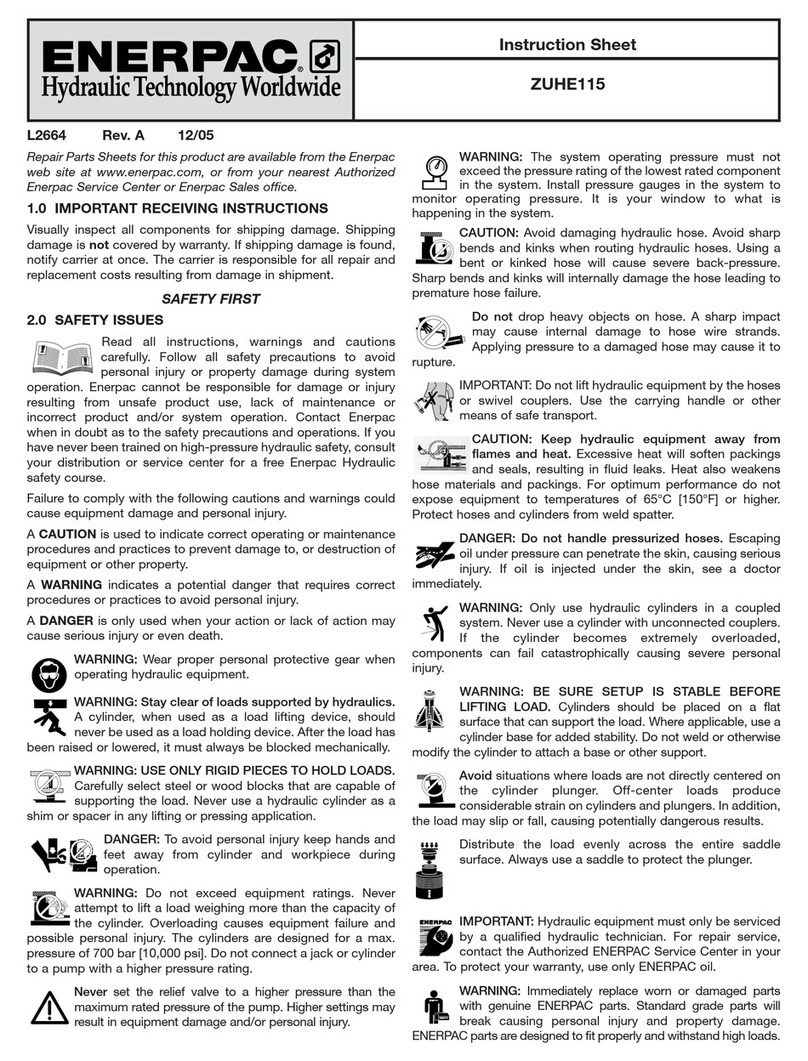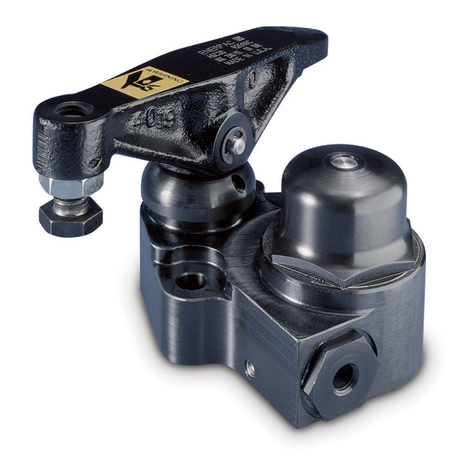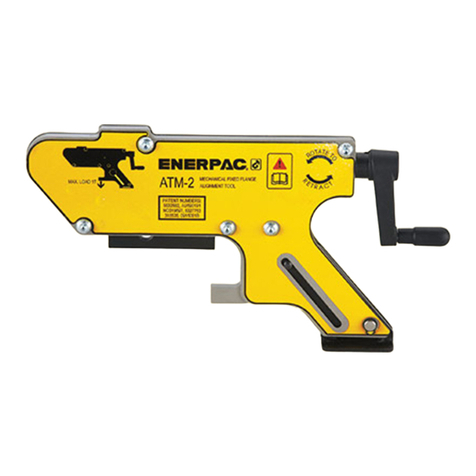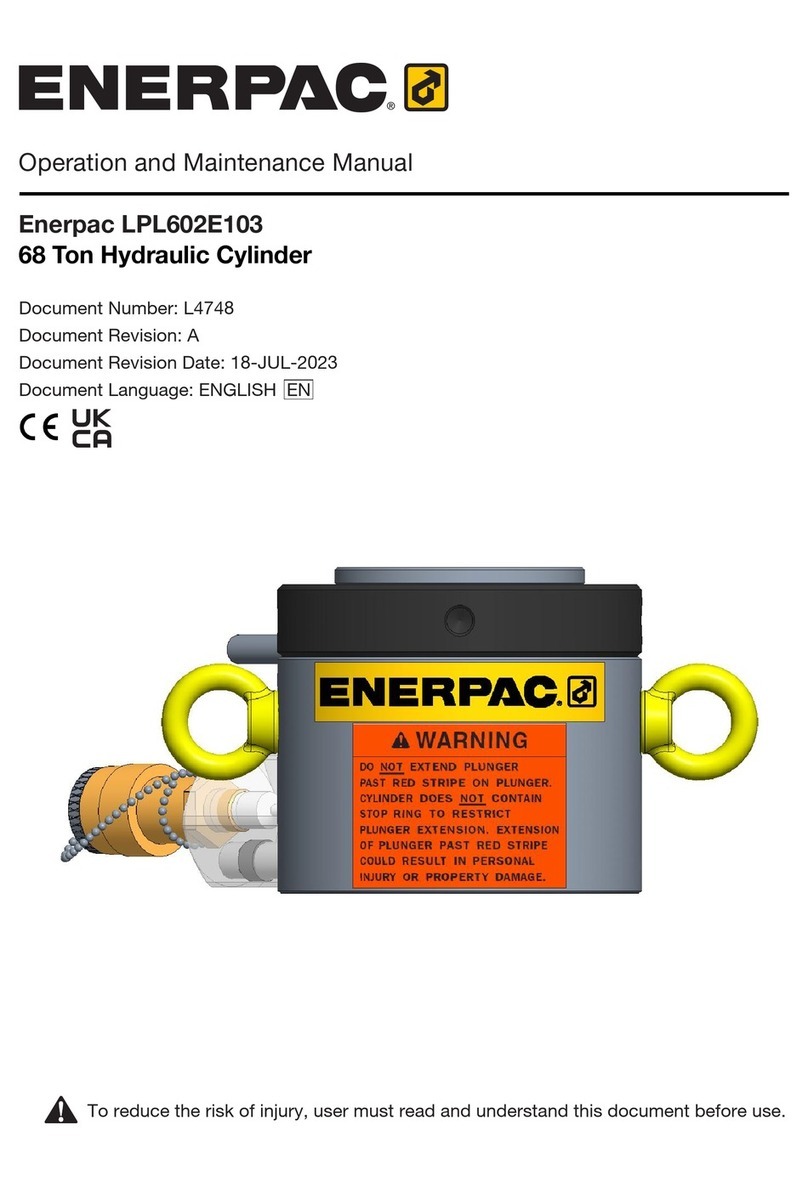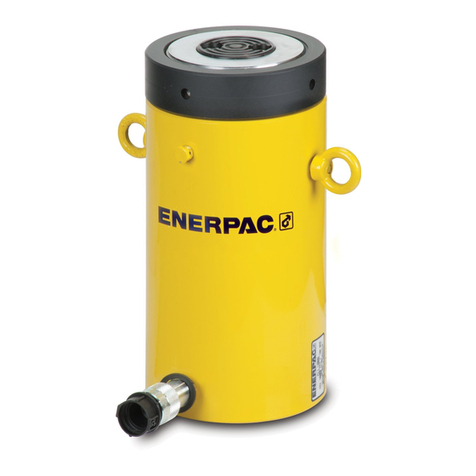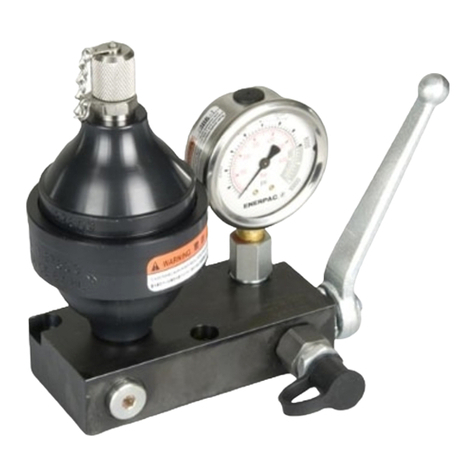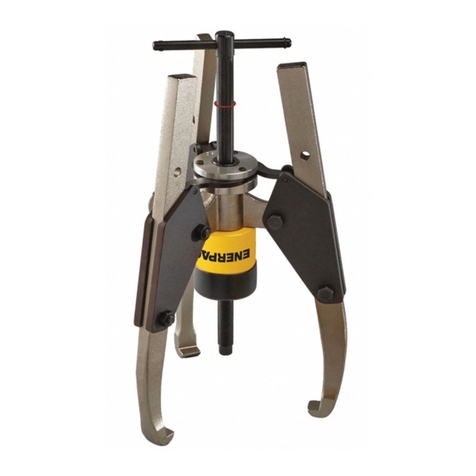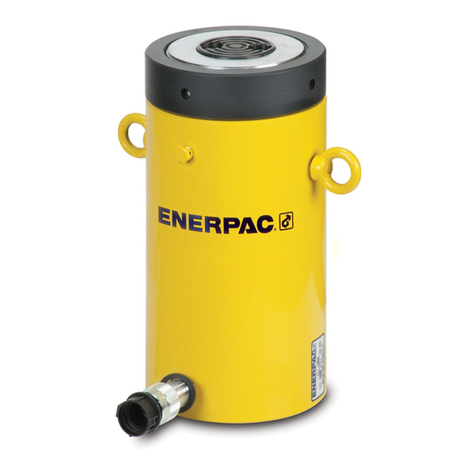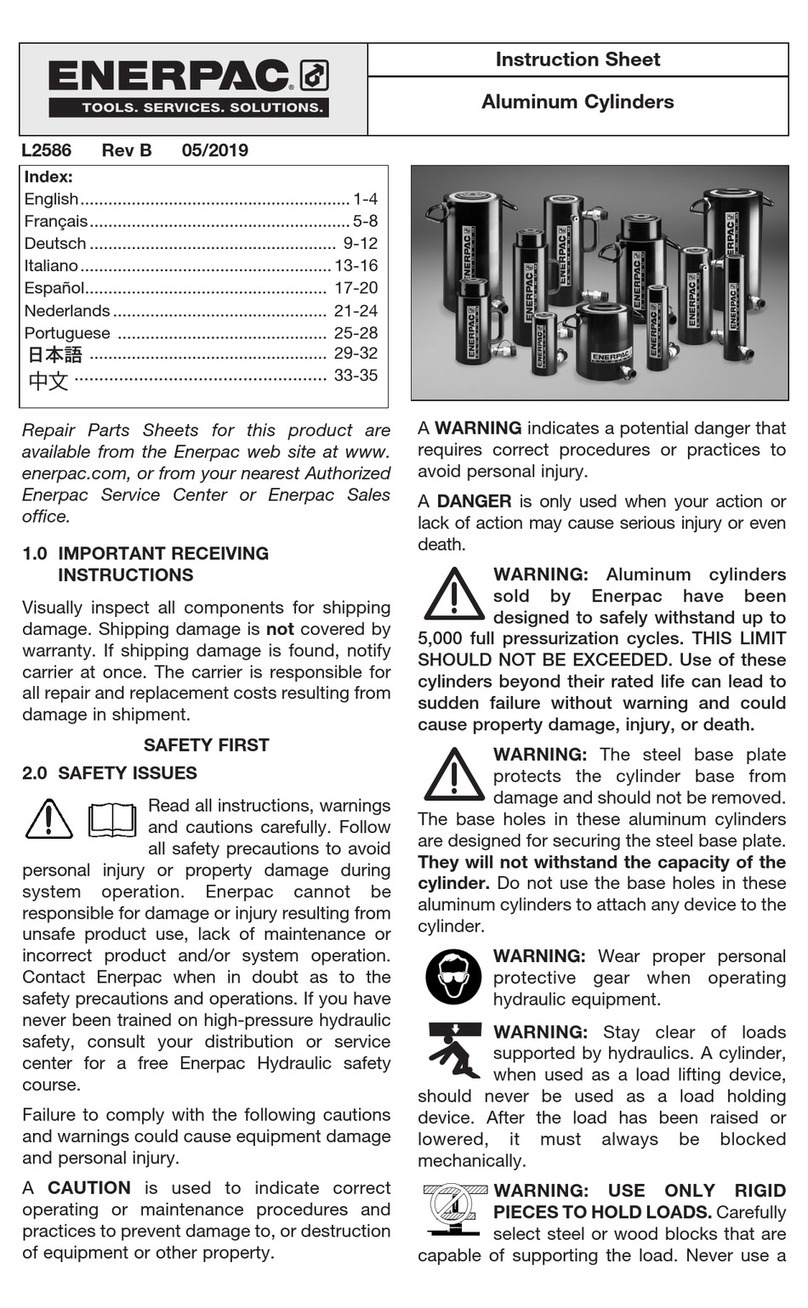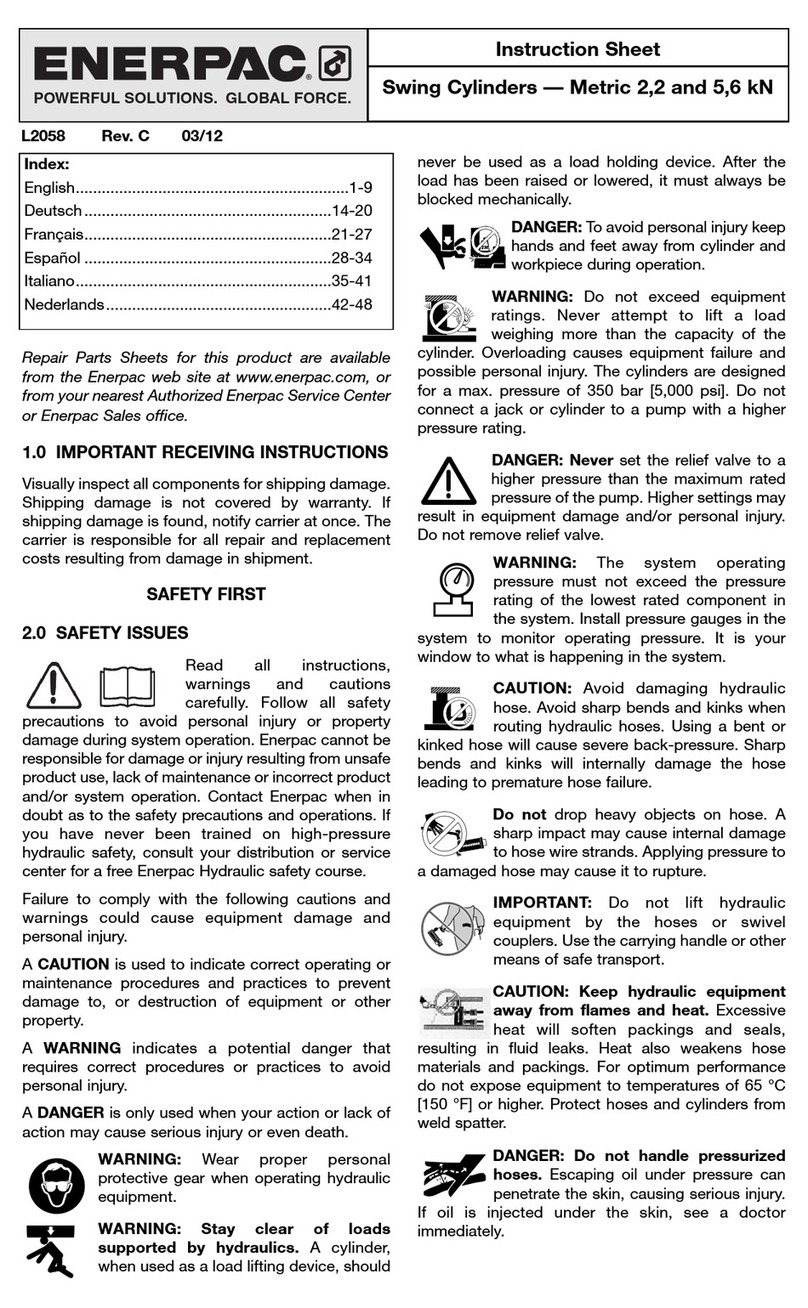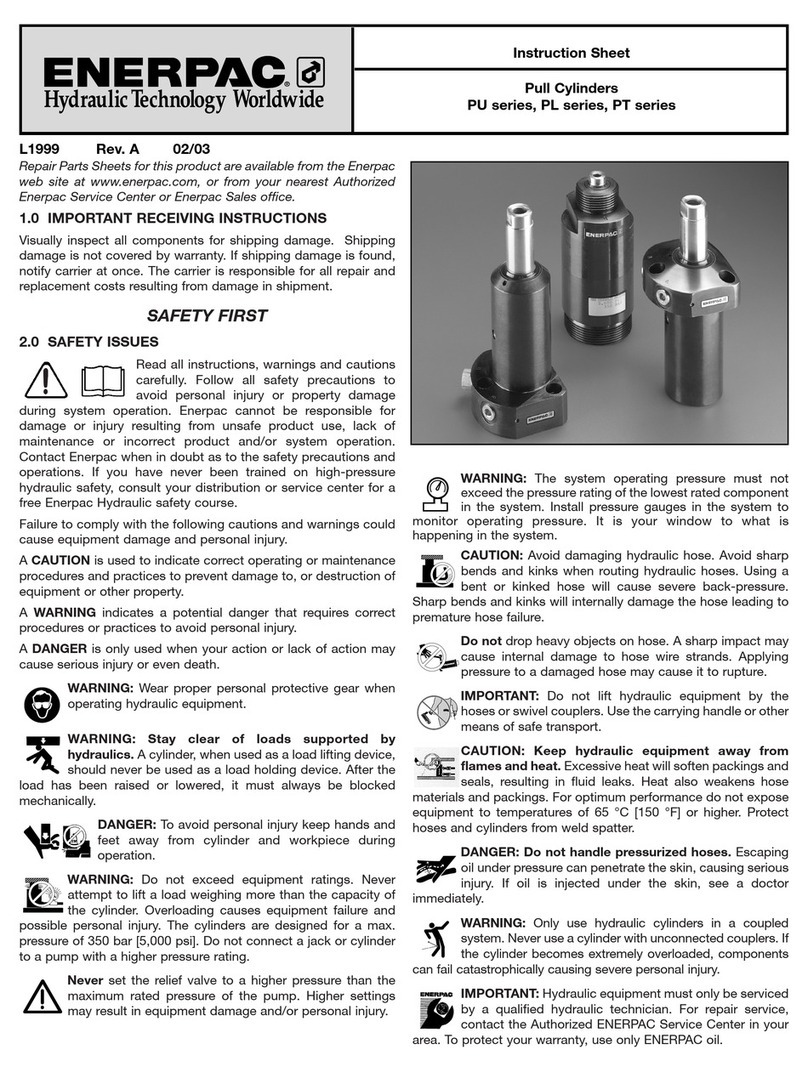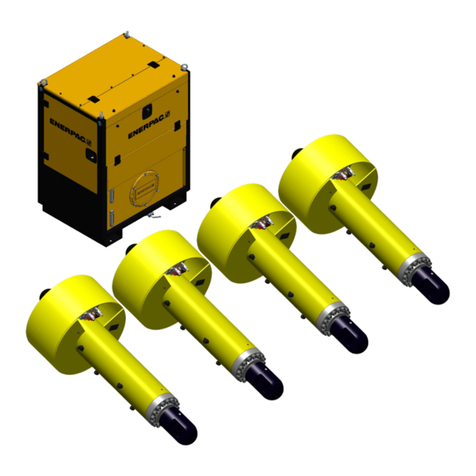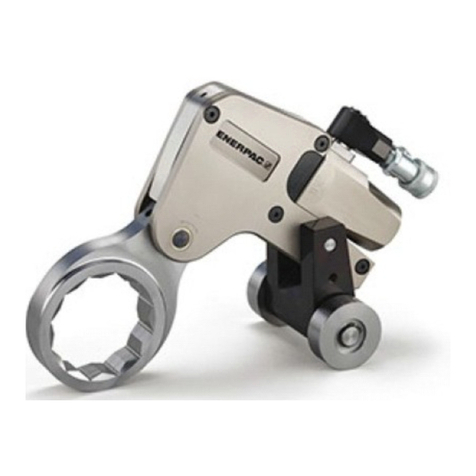
2
• Always wear and use appropriate personal protective
equipment (PPE) such as non-skid safety shoes, hard-
hat, hearing protection, and face and eye protection. Use
of these and other PPE items (used as appropriate for the
conditions) will reduce the chance of personal injuries. The
use of these items may also be required by local regulations
or laws.
• Consult your employer concerning specific safety
requirements and the safety equipment required for use in
your country or region.
• Do not exceed equipment ratings. Never attempt to lift a load
weighing more than the capacity of the lifting wedge. Overloading
causes equipment failure and possible personal injury.
• Never set a relief valve to a higher pressure than the
maximum rated pressure of the pump and lifting wedge. If
ratings are dierent, relief valve setting should not exceed
the setting of the lowest rated component (pump or lifting
wedge).
• Keep others clear of the work area while the tool is in use. Be
sure that all personnel not operating the lifting wedge remain
at a safe distance when the lifting wedge is in operation.
• Stop the lifting wedge if people and/or animals enter the
work area.
• Ensure that the operator is alert, observant of the task being
performed and that the work is being done with care.
• Do not allow use of the lifting wedge by persons that are
tired, or under the influence of drugs, alcohol or medication.
• Do not allow children to operate the lifting wedge or to assist.
• Do not use the lifting wedge to lift people. Do not allow
people to be on top of the load during lifting or lowering.
• Be sure setup is stable before lifting load. Lifting wedges
should be located on a firm and level surface capable of
supporting the full load. Do not weld or otherwise modify the
lifting wedge to attach a base or other support.
• Use only Enerpac SB-2 safety block or blocking pieces to
hold loads. Never use a hydraulic lifting wedge as a shim or
spacer in any lifting application.
• Do not use lifting wedge in situations where loads are not
directly centered or placed fully on the lifting wedge. O-
center loads produce considerable strain on lifting wedges.
In addition, the load may slip or fall, causing potential danger.
• Do not use lifting wedge with stepped block in situations
where the stepped block is not positioned fully under the
load.
• Lift only dead weight loads. Avoid lifting live weight loads.
• Be especially careful when lifting loads such as partially filled
storage tanks, in which the center of gravity could move or
shift during lifting. Be aware that the distribution of some
loads can change quickly and without warning.
• Keep all personnel clear of the work area while lifting or
lowering is in progress. To avoid personal injury, keep hands
and feet away from lifting wedge and load during operation.
• Maintain communication with the operator at all times during
lifting or lowering. Use hand signals, two- way radios or
other appropriate forms of communication (as required by
applicable laws and regulations) if the load is not visible to
the operator.
• Operate pump and valve as required to ensure that the load
is lifted and lowered evenly and at a controlled rate.
• Closely watch the load at all times during lifting and lowering.
Stop lifting or lowering immediately if the load becomes
unstable or appears to be lifting or lowering unevenly.
• Stay clear of loads supported only by hydraulics. Follow
the lifted load with the Enerpac SB-2 safety block or use
suitable cribbing.
• Conduct a risk assessment prior to performing any lift.
• Always be certain that hydraulic pressure is fully relieved
and that the load is fully removed from the lifting wedge(s)
before disconnecting hydraulic hoses, loosening hydraulic
fittings, or performing any lifting wedge disassembly or
repair procedures.
• Never allow persons to work under or near the load while the
load is being supported with the Enerpac SB-2 safety block
or hydraulically. After the load has been raised or lowered,
it always must be blocked mechanically with the Enerpac
SB-2 safety block with suitable cribbing.
• When using a hand pump (or a tool with a built-in hand
pump), always keep your body to the side of the pump,
away from the line of force of the pump lever. Keep hands
and fingers away from pinch point areas, such as the pump
lever linkage. Never add extensions to the pump lever.
1.3 Safety Symbols
WARNING
Failure to observe and comply with the safety symbols
axed to the lifting wedge could result in death or serious
personal injury.
Make sure the safety symbols (decals, labels, etc.) are securely
axed to the tool and that they are legible. If not, obtain
replacements from Enerpac. Refer to the tool repair parts
sheet for locations and part numbers. Failure to maintain safety
symbols on tool could result in death or serious personal injury.
The following safety symbols are axed to the lifting wedge:
Crush hazard: Keep hands, fingers and other
body parts away from the lifting wedge during
operation.
Read Instruction Sheet: Read the instruction
sheet before using or servicing equipment.
1.4 Additional Safety Precautions, Model LW-16
WARNING
Failure to observe and comply with the following
precautions and instructions may result in death or serious
personal injury. Property damage could also occur.
• Always read, follow and completely understand all
manufacturer's instructions when operating pumps, valves
and all other devices used with the lifting wedge. Follow all
safety precautions contained in the manufacturer's manuals.
• Use the lifting wedge only with a compatible Enerpac pump.
Use of a non-compatible pump may result in erratic and/or
unsafe operation.
• The lifting wedge is designed for a maximum working
pressure of 10,000 psi [700 bar]. Do not connect the tool
to a pump with a higher pressure rating. Be certain that all
hydraulic hoses and fittings are properly connected and that
they are rated at 10,000 psi [700 bar] or higher.
• Never set a relief valve to a higher pressure than the
maximum rated pressure of the pump and tool. If ratings are
dierent, relief valve setting should not exceed the setting of
the lowest rated component (pump or tool).
• Perform cleaning, maintenance and repair operations only
after disconnecting the tool from the hydraulic pump.
• Wear suitable personal protective equipment (PPE) such
as goggles, gloves and protective clothing when checking
hoses and fittings.
• Do not leave the lifting wedge unattended in the workplace
when it is connected to the hydraulic pump.

